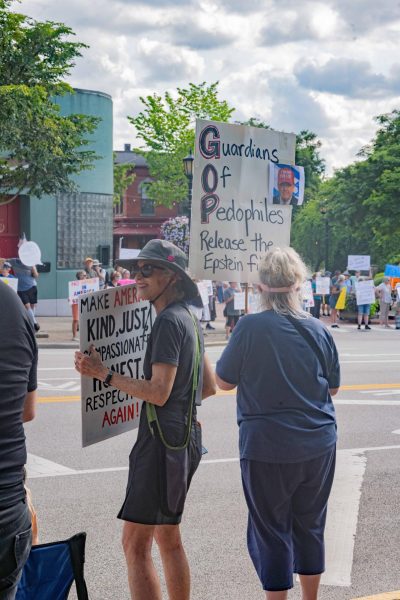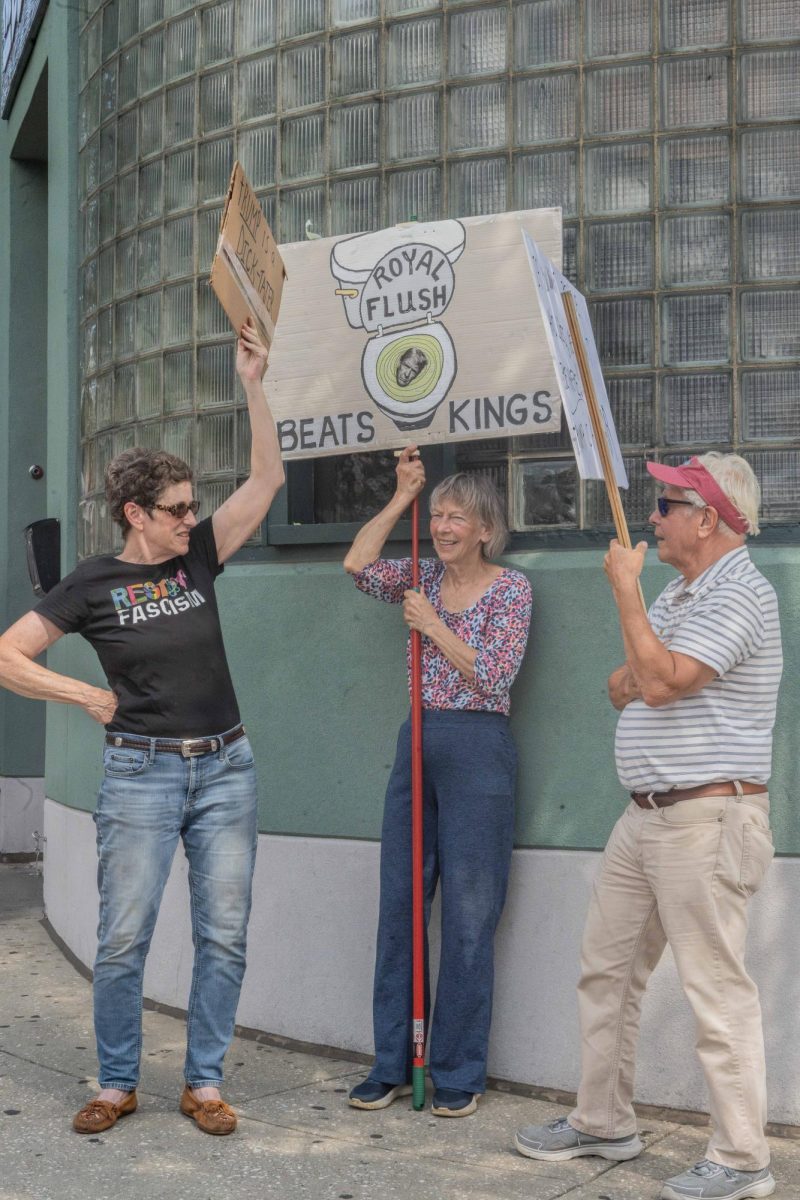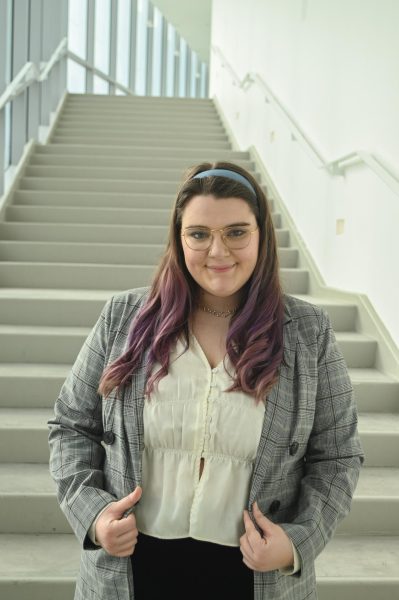Between the months of June and August, almost 4,000 protests were held in cities across the country as part of four nationwide protests: No Kings, Free America Weekend, Good Trouble Lives On and most recently Rage Against the Regime.
All four of these protest series occurred in Kent and neighboring cities like Akron. While Kent is no stranger to protests and the events of May 4 , these summer protests presented a unique trend of monthly nationwide participation against the Trump administration and its conservative policies.
Chair of the Cuyahoga Women’s Caucus and organizer of the Cleveland protests, Cindy Demsey, said Indivisible is the main grassroots organization that organized these summer protests and chose rallies’ names, themes, focuses and dates.
“[Protests] make such great sense to those of us who organize. … It’s a way of a national collective coming together to show the outrage or the pushback to what is happening,” Demsey said. “Most importantly, for the Trump administration to see that there is a huge number of people who see what’s happening, and absolutely fighting back, trying to preserve our democracy and our form of government.”
Similar to Demsey, fellow organizer for Kent’s protests, Vivien Sandlund, found nationwide themes to add creativity to the protest’s formats. With the Good Trouble Protest, honoring the memory and lifelong activism of former Congressman and civil rights leader John Lewis, Sandlund invited local activist Kenyona Sunny Park as a speaker and a Good Trouble choir.

Sandlund organized her first nationwide protest for Kent in the spring with co-organizer Michael Pacifico. With Hands Off, Sandlund said she felt a sense of togetherness in seeing the rally’s turnout.
“It was almost a relief on the part of people to be able to be out in the street and with other people and to feel supported,” Sandlund said. “ I felt that way too, to feel like we’re not alone … and we’re not victims. We are active and we are together and we are engaged.”
This togetherness has extended into protests across Northeast Ohio, with both Sandlund and Demsey seeing multi-generational supporters, in addition to ones from varying political backgrounds.
Demsey said a rally in Lincoln Park had a large number of attendees who were children, causing protests to be dubbed as family-friendly, but has also seen a positive gender shift in protest attendance over the summer.
With Demsey’s experience leading a women’s group, she has seen that women are more likely to attend a protest. However, throughout the summer, she has seen more men come out and attend. Demsey said some men have told her that they are motivated to participate in demonstrations due to frustrations over the “authoritarian” handling of U.S. Immigrations and Customs Enforcement detainments.
“The men who have come out have really made it a point to say they’ve never done anything like this before. They are independents, a lot of them,” Demsey said. “Some of them are Republicans or will no longer be Republicans.”
Sandlund has seen a Republican turnout at Kent demonstrations as well, with some bringing signs saying, “Republicans against Trump,” and others telling Sandlund the current administration does not align with Republican beliefs.
Both organizers credited the nonviolent approach of the rallies for their continued duration and the crowds generated. Sandlund attributes non-violence as being central to all protests and practicing nonviolent demonstrations as honoring the teaching of Lewis. She further adds how grassroots organizations, like Indivisible, make it clear to organizers to have protests remain peaceful.
Kent protests this summer were able to be held safely with police protection. Police Chief Nick Shearer said the police department’s first approach to protests is to support the First Amendment right of protesters to demonstrate peacefully. He said the police are present at all times during the demonstrations to watch over demonstrators and ensure everyone is following the law.
Shearer confirmed that these protest series have been maintaining their commitment to nonviolence, as the police chief has seen no issues with the protests. For future nationwide protests, Shearer hopes they will continue to be peaceful like the summer ones.

“We would ask the people, honor all the laws of the city of Kent, the state of Ohio and just use good judgment,” Shearer said. ”Call us, let us respond and deal with that before it becomes a problem.”
Similar to Sandlund, Demsey said she and fellow Cleveland organizers work with police to ensure no issues of obstructing traffic or creating tension among bystanders.
“That is a core to every event that we organize … that is number one, it’s got to be peaceful,” Demsey said. “While we are angry and the emotion is strong and fierce, we will only accept nonviolence and reinforce [the] peaceful aspect.”
With safety and a solid turnout, both organizers felt the challenge of appealing to younger Americans. While Demsey has seen children come out and get involved, she said appealing to a younger audience is an obstacle she has tried to tackle throughout the summer. Some of her efforts mirror Kent’s by bringing in speakers for rallies and utilizing social media.
Sandlund said she sees students playing a key role once they return to campus.
“We have seen a lot of older people at the protests, but we also do see younger people, and I think we’ll start to see more as we get into the start of this new semester,” Sandlund said.
Demsey and Sandlund both see the nationwide protest continuing into the fall. Sandlund said there is a pending Labor Day protest. Sundland also expressed interest in evolving Kent’s protests to provide a way for members of vulnerable groups to protest in a way that won’t put them at risk.
“People are out in the streets being visible and expressing opposition to the bad things going on, and also putting forward a vision of what we do want to see and what we want to change for the good,” Sandlund said. “It gives people hope, it gives people the feeling that we’re not alone, and we can make our country better and we can roll back the things that are harmful.”
Nikki Gasiewski is a reporter. Contact her at [email protected].





